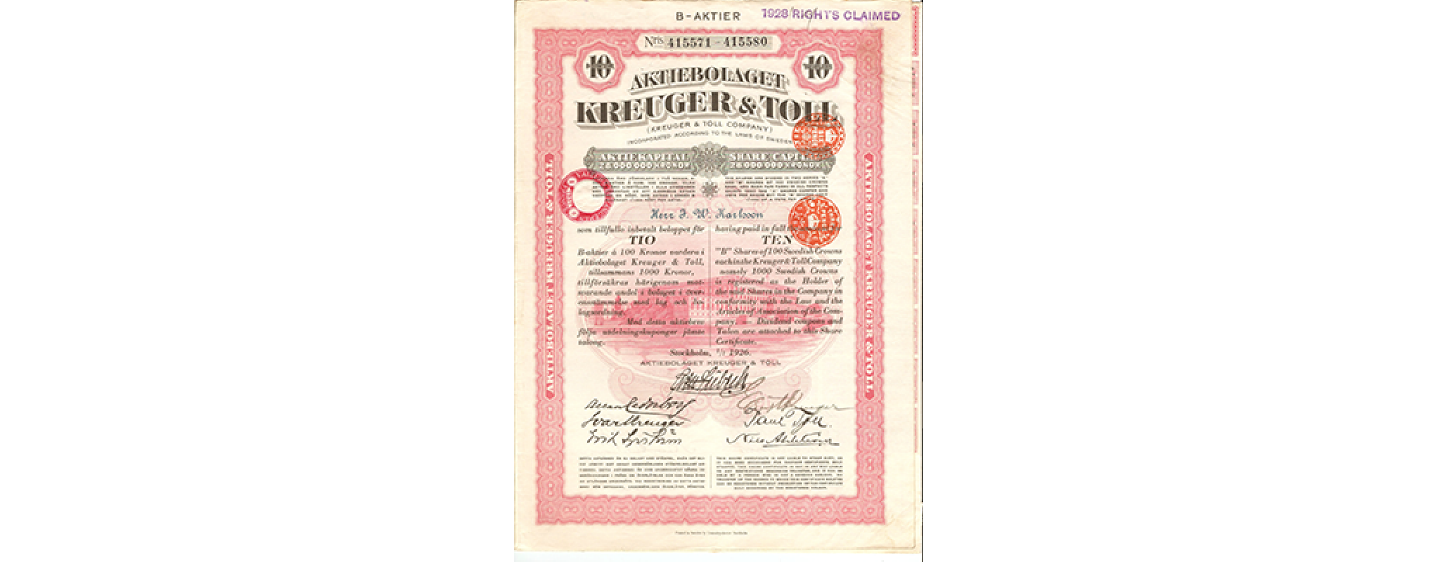1932 - The Kreuger Crash

Ivar Kreuger’s enormous financial empire collapsed in the wake of the Wall Street Crash. Despite enormous credits from Swedish banks and the Riksbank, he was unable to get his affairs in order and committed suicide in Paris.
The financial unease following the Wall Street Crash resulted in the funding of ‘matchstick king’ Ivar Kreuger’s highly widespread international businesses drying up. The flow of new capital from the United States in particular stopped at the same time as Kreuger had enormous commitments falling due for payment. In 1931/32, Kreuger had borrowed SEK 800 million from the Swedish commercial banks, corresponding to 10 per cent of Sweden’s GDP. However, this was not enough and he turned to the Riksbank several times to obtain loans.
The bank, led by Governor Ivar Rooth, initially rejected his applications. But prime minister Carl Gustaf Ekman persuaded the bank to reconsider its decisions. Despite this support, Kreuger did not get his finances in order and committed suicide on 1 March 1932, which contributed towards the Swedish banking system being thoroughly shaken.
Skandinavbanken, owned by Kreuger, took over his Riksbank loans after his suicide, as the bank had stood surety for them.
It all finished with the Swedish National Debt Office granting Skandinavbanken a loan to prevent the bank going bankrupt, which would have had unpredictable consequences for the stability of the entire financial system. By lending to Skandinavbanken, the government authorities managed to limit repercussions in the banking sector.
In the 1990s, the government was once again forced to act in a similar manner. The stability of the financial system is too important for central government to leave it to its fate, as Gripenstedt understood in 1863 and Hans Forsell was forced to realise in 1897.
